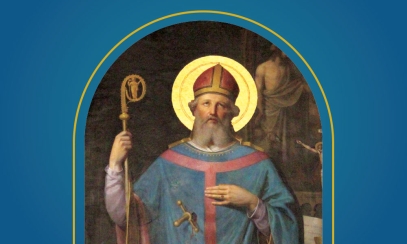
St. Cecilia
Feast Day: Nov. 22
Feast Day: Nov. 22
St. Cecilia has inspired Christians and artists for centuries. Believed to have been martyred around 230, this patroness of music and musicians continues to be honored for her unfailing devotion to God, and for her courage and generosity.
St. Cecilia has inspired Christians and artists for centuries. Believed to have been martyred around 230, this patroness of music and musicians continues to be honored for her unfailing devotion to God, and for her courage and generosity.
According to stories from the fifth century, Cecilia was a Roman citizen from a wealthy family who secretly consecrated herself to God as a child. When her father insisted she marry a pagan, she fasted and prayed to preserve her virginity. During the wedding, Cecilia sang a prayer in her heart asking God for his intervention. That night, she told her husband that an angel had been sent to protect her from consummating the marriage. When he asked to see the angel, Cecilia sent him to be baptized by Pope Urban, and he was converted. Returning to his new bride, he found an angel with Cecilia who crowned the two of them with roses and lilies.
Tradition says that after her husband was martyred for refusing to sacrifice to pagan Gods, Cecilia donated her material goods to the poor and converted more than 400 people with her preaching before she was sentenced to death.
Before her death, she donated her home to Pope Urban, asking that it be converted into a church. The church, Santa Cecilia in Trastevere, was erected on this site in the third century. In 1599, when the church was renovated, Cecilia’s remains were examined and found to be incorrupt. Her body was reburied under the altar.
Due to her prayerful song during her wedding, Cecilia is honored as the patroness of church musicians, and is usually depicted with musical instruments. Her story has inspired works by artists through the years, including painters and composers, and Geoffrey Chaucer retells her story in “The Second Nun’s Tale” in The Canterbury Tales.



